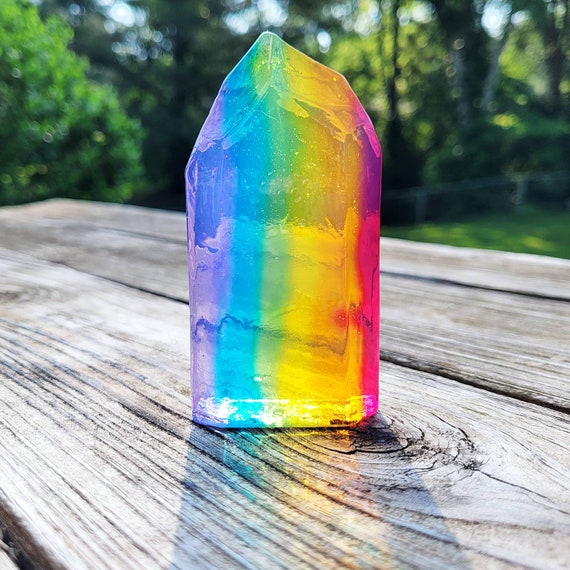The Formation of Rainbow Crystals: An Exploration of Nature’s Artistry

Rainbow crystals, captivating in their appearance and sought after by both crystal enthusiasts and spiritual seekers, are not only beautiful but also fascinating in how they form. These crystals, often clear quartz imbued with a spectrum of colors, provide a visual feast and are believed to hold significant metaphysical properties.
What Are Rainbow Crystals?
Rainbow crystals are primarily quartz crystals that display a beautiful array of colors visible within their crystalline structure. The colors appear as rainbow-like inclusions, which seem to reflect and refract light in a spectrum of hues. These colors are typically seen when light interacts with certain inclusions or structural anomalies within the crystal.
Geological Formation of Quartz Crystals
To understand how rainbow crystals form, it is essential first to consider the formation of quartz crystals, which most rainbow crystals are. Quartz is a mineral composed of silicon dioxide and is one of the most abundant minerals in the Earth’s crust.
The Role of Silica
Quartz crystals form when silica-rich solutions, typically found in underground hydrothermal vents, begin to cool. As the temperature decreases, silica starts to crystallize, forming quartz. This process can occur over thousands, if not millions, of years, and the conditions under which the crystallization occurs greatly affect the crystal’s final appearance and properties.
Influence of Temperature and Pressure
The temperature and pressure conditions play critical roles in the crystal growth process. High temperatures and pressures typically result in well-formed crystal structures. Any changes in these conditions can lead to variations and imperfections within the crystal, which are often responsible for the formation of rainbow crystals.
The Formation of Rainbow Inclusions
Rainbow crystals get their spectacular color effects primarily through two phenomena: inclusions and structural anomalies. These features interact with light to produce the rainbow appearance.
Types of Inclusions
- Fluid Inclusions: These are pockets of liquid trapped within the crystal during its growth. These fluids often contain various minerals or gases, which can refract light differently than the surrounding quartz, leading to the appearance of rainbows.
- Gas Inclusions: Similar to fluid inclusions, gas bubbles can also refract and reflect light, contributing to the rainbow effect.
- Solid Inclusions: These can include minerals like goethite, hematite, or feldspar, which differ in refractive index from quartz and can create colorful light reflections.
Structural Anomalies
Structural anomalies in quartz crystals, such as twinning, fractures, or striations, can also lead to the formation of rainbow colors. These anomalies cause light to bend or fracture as it passes through, creating a spectrum of light that appears as a rainbow.
Environmental Factors Influencing Rainbow Crystal Formation
The environment in which a quartz crystal grows can greatly influence whether it develops into a rainbow crystal. Factors such as the presence of water, the concentration of different minerals in the solution, and even geological activity such as earthquakes can impact the formation process.
Role of Water
Water is a critical component in the formation of quartz crystals. It serves as the medium in which silica is dissolved and transported. The presence of water also facilitates the incorporation of different minerals and gases into the crystal, which are crucial for the development of rainbow inclusions.
Geological Activity
Seismic activity can cause fractures and faults in the growing crystal, leading to structural anomalies that are essential for the rainbow effect. These disruptions in the crystal’s growth can be where rainbow formations are most pronounced.
Rainbow crystals are not only a testament to the intricate and wondrous processes of nature but also hold a special place in various cultural and metaphysical contexts. They are often associated with hope, happiness, and the diversity of nature’s beauty, reflected in the array of colors they display. For collectors, healers, and enthusiasts, rainbow crystals are valued both for their aesthetic beauty and their purported spiritual benefits, making them a coveted addition to any collection.
The formation of rainbow crystals is a perfect example of the complex interplay between the geological, chemical, and physical processes that shape our natural world.
Harnessing Harmony: A Comprehensive Guide to Chakra Crystals and Their Healing Powers
Provide an overview of what chakras are—energy centers in the human body according to traditional Indian medicine. Explain the concept of using crystals to balance and enhance chakra energies. Understanding[...]











